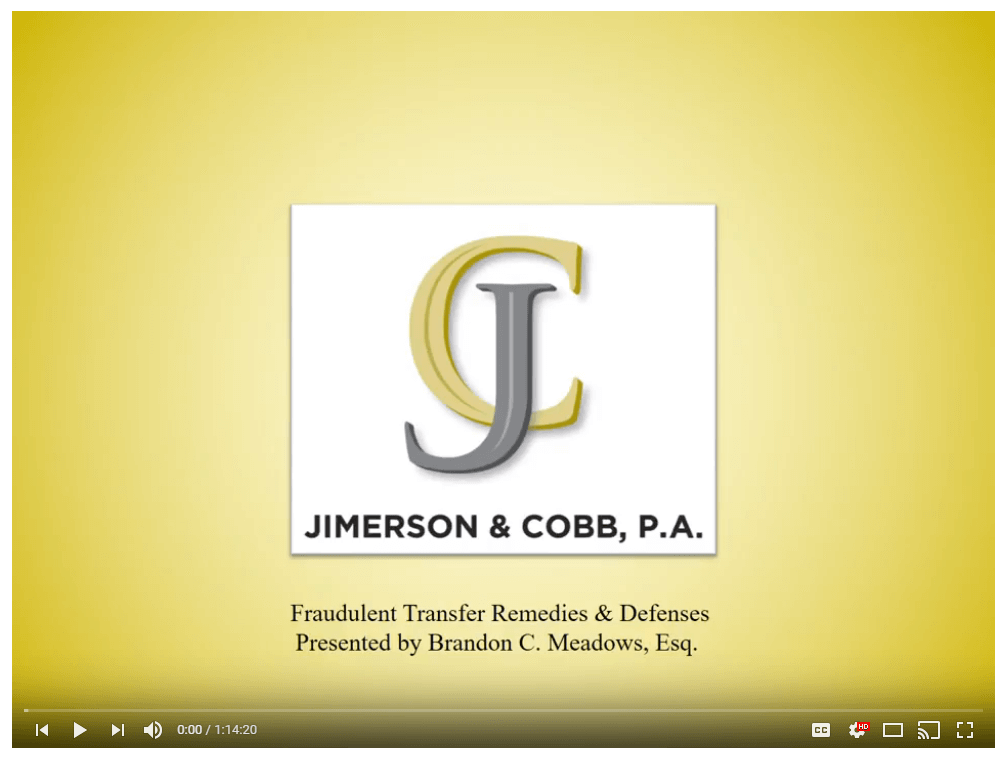There are fraudulent transfer remedies available to creditors, whether their claims are liquidated, mature or immature. But what fraudulent transfer defenses are likely, for debtors or creditors alike? Asset protection professionals involved with estates and trusts grapple with understanding these rights everyday. This video presentation was recorded by Jimerson Birr attorney Brandon C. Meadows to provide an overview and some clarity on the law.
The presentation can be accessed by visiting YouTube or clicking play on the embedded image below. The length of the presentation is 1:14:20.
What Is a Fraudulent Transfer Under FUFTA?
Brandon starts by unpacking Chapter 726 of the Florida Statutes to help distinguish a fraudulent transfer from a common law fraud or tort. He emphasizes why the definitions are so important for clear understanding because there are multiple types of “fraud” addressed in the law. Next, he describes the four causes of action under FUFTA including one Actual Fraud and three Constructive Frauds.
Fraudulent Transfer Remedies And Extent Of Liability For Creditors
Creditors have the ability to receive a money judgment, but that its limit depends on the value of the asset at the time of transfer. Furthermore, a creditor has a choice of how they want their remedy (i.e. avoidance vs money judgment). Additionally, Brandon shares about parties who may be exposed to liability:
- Transferor
- Transferees
- Transfer beneficiaries
- Third parties
This is particularly important because it means an attorney, accountant or financial agent may be liable.
Fraudulent Transfer Defenses To FUFTA Claims
Although they are not all probed in depth in this presentation, Brandon reviews and provides pertinent information on key defenses to a FUFTA claim:
- Good Faith
- REV
- Solvency
- Statute of Repose
- Specific Defenses
Uniform Voidable Transactions Action (UVTA)
Brandon also provides a view of the future, by sharing how UFTA is evolving with UVTA on the horizon. This has implications should Florida introduce UVTA, as the largest change would be Choice of Law (would be based on the State of Transferor, not the State of Residence).

